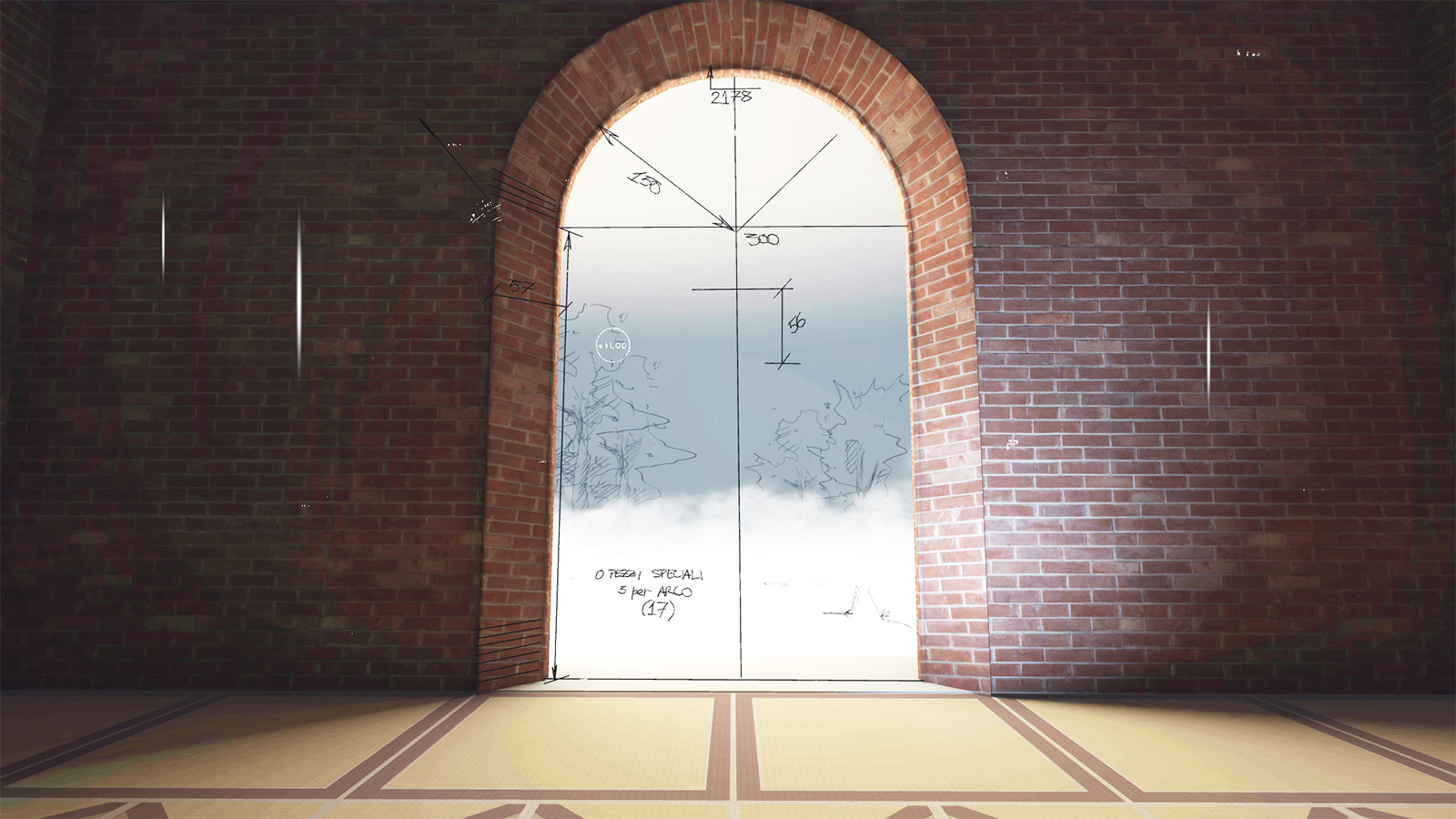When the first International Exhibition of Decorative Arts launched in 1923 in the town of Monza in northern Italy, its promise was plain. An international showcase of graphic arts and craftsmanship, the event sought to cultivate ties between art, industry, and society, and would swiftly emerge as a force in the country’s design and cultural quarters. Beyond that impact, the Triennale Milano, as it was rebranded, would also come to manifest that rarer thing: staying power.
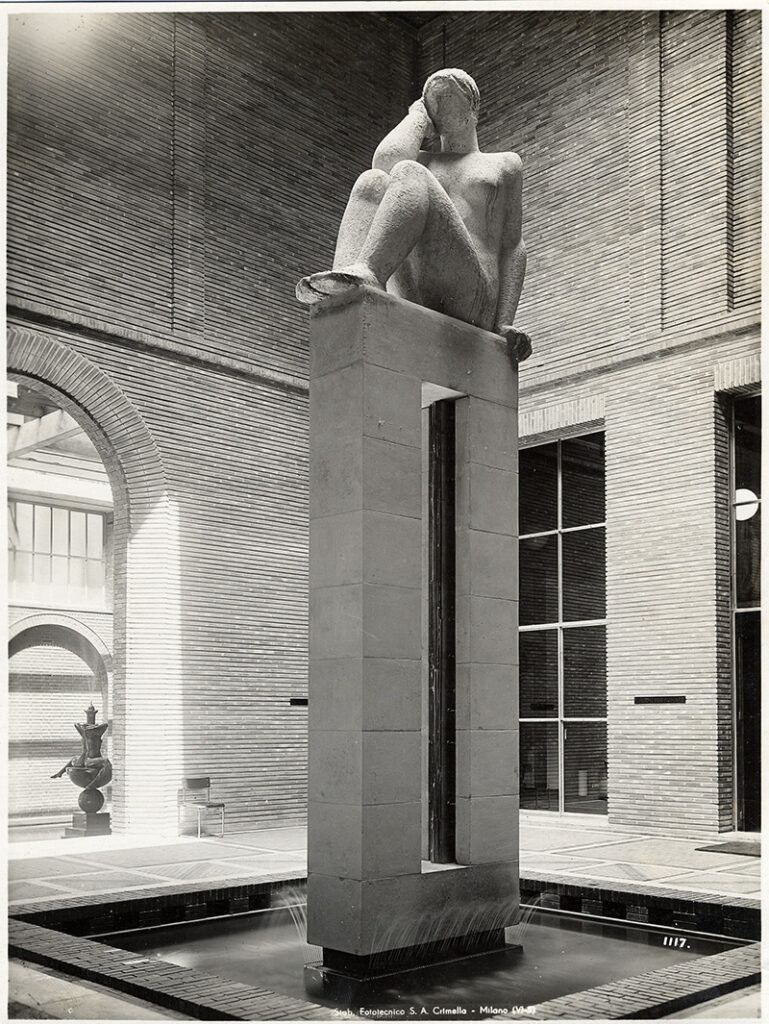
The Impluvium at the Palazzo dell’Arte in 1933, which is recreated in the opening chapter of 1923: Past Futures. Image: Foto Crimella
On July 15, the 23rd Triennale Milano International Exhibition will open at the Palazzo dell’Arte in Milan, an institution and the headquarters of the Triennale established in 1933. Titled Unknown Unknowns. An Introduction to Mysteries, the show gathers 400 artists, designers, and architects from 40 countries to delve into the unknown — “what we do not know that we don’t know,” according to the exhibition text — via a host of multimedia installations and individual showcases.
As well, the Triennale is commemorating its centennial with its own first step into VR. In partnership with VIVE Arts, the museum will debut 1923: Past Futures, a virtual environment that tracks the Triennale’s lifetime from 1933 to 2022. Besides immersing viewers in reconstructed moments and spaces throughout the institution’s history, the project, built out by XR studio Reframe Productions, looks to virtually preserve the Triennale’s archives and notable works by Italian artists.
“We aim to make people discover more about the role of the International Exhibitions as key moments in our activities and planning,” says Triennale Milano team in charge of the VR project. “At the same time, we wanted to improve the visiting experience by actively involving the visitors.”

1923: Past Futures immerses visitors in virtually recreated scenes and spaces from the Triennale’s history. Image: VR still courtesy of Reframe Productions, VIVE Arts
In this, it makes sense that VIVE Arts should serve as a partner in the Triennale’s debut outing into virtual storytelling. Over the past five years, the company has worked with other institutions from the Palace Museum to the V&A to launch their own VR experiences, while remaining wide-eyed about the medium’s potential. “Virtual reality enables a wide range of non-linear storytelling opportunities,” says Celine Yeh, Director of VIVE Arts. “[It can also] extend an institution’s reach beyond their walls, offering new ways to experience content or engage new communities online.”
At the Palazzo dell’Arte, the 1923: Past Futures will be installed in the main hall for easy and free access, in four booths where visitors can don a VIVE Focus 3 headset for a 360-degree “virtual journey through time.” Following its opening at the International Exhibition, the VR experience will continue to be expanded by Reframe Productions, with the aim of rolling out an extended version of the exhibition on September 1.
Ahead of the VR installation’s opening, the Triennale Milano and VIVE Arts fill us in about their collaboration and what 1923: Past Futures means for tomorrow’s museum experiences.
Why the decision to use a virtual environment to commemorate the Triennale’s centennial?
Triennale: We aim to make people discover more about the role of International Exhibitions as key moments in our activities and planning. Virtual reality provides a sensorially impactful and emotionally engaging activity that perfectly allows people to retrace the history of the institution.
Yeh: We approached the Triennale Milano with the idea of developing a VR experience together as we were drawn to their rich collection and program, in addition to the fascinating creative possibilities of using virtual reality to tell the story of design and its history.
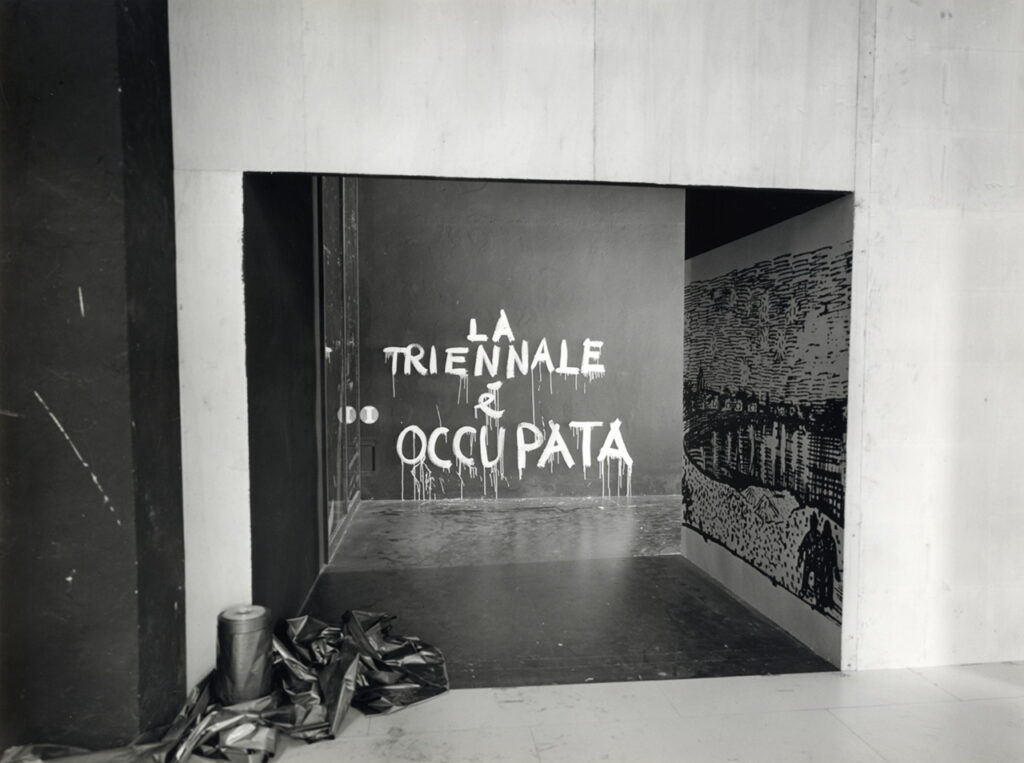
To create the virtual experience, the Triennale delved into its archives to locate key moments and spaces to be reconstructed in VR. Image: Protest graffiti at the 1968 triennial, which was occupied on its opening day in support of contemporaneous Paris street protests / Triennale di Milano — Publifoto
How does the VR experience align with the museum’s broader mission?
Triennale: We have been working to broaden our communication methods. During the 2020 pandemic, we offered online workshops and virtual tours, and we had a great response from the public. The launch of an immersive experience such as virtual reality is a starting point for new explorations of the Palazzo dell’Arte, as VR’s modular structure allows it to be enriched and expanded.
How did your partnership play out?
Yeh: We worked collaboratively with the Triennale Milano’s team, who led the curatorial direction, and connected them to Reframe Productions. Our role was to support the institution and the developers to create something new and sensorially engaging for audiences, but that reflects the institution’s mission and vision.
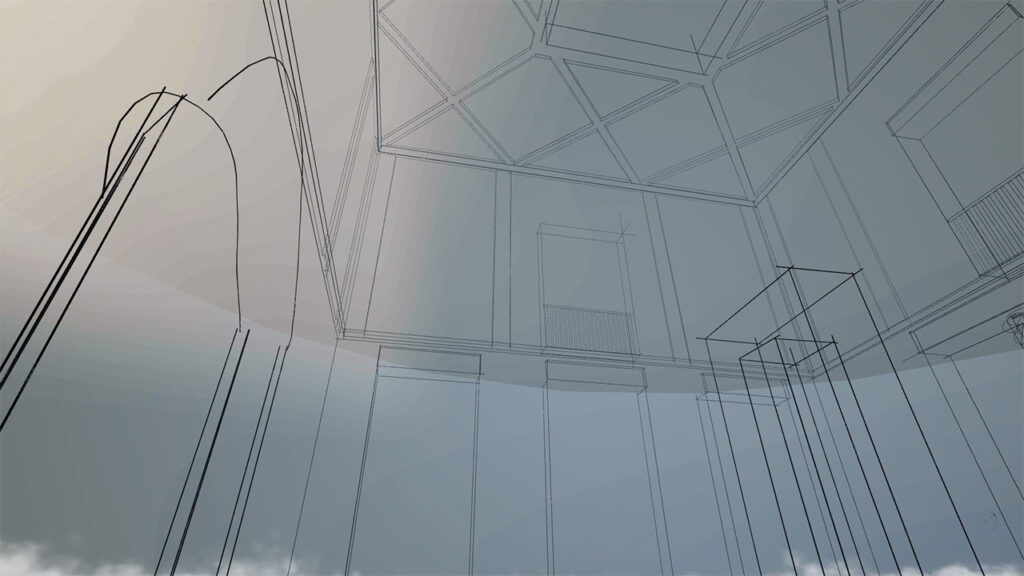
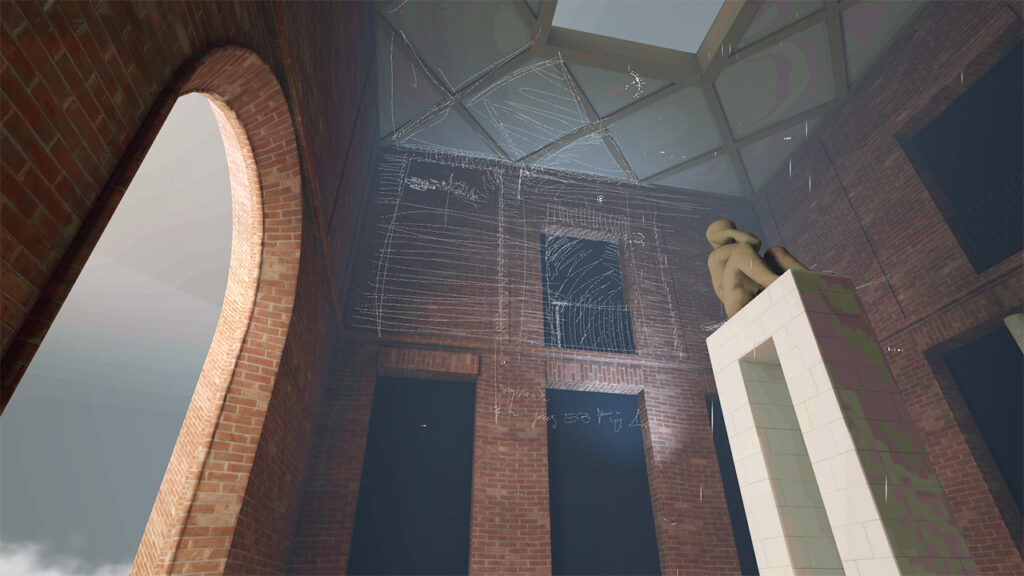
Reframe Productions designed the experience “scene by scene, allowing for interactions, textures and space,” says VIVE Arts’ Celine Yeh. Images: VR stills courtesy of Reframe Productions, VIVE Arts
Could you share the process of developing and building out the VR experience?
Yeh: Creating a VR experience is a collaborative process with an array of individuals sharing their different perspectives and skills throughout the development process, from creative and technical to devising the user experience and installation design.
Triennale: Work on the VR experience involved our offices and some technological partners. Work was handled by the Communication department, in particular the Digital team, the Archive, and the Marketing department. The team led the curatorial direction, selecting a series of moments and events that profoundly marked the institution’s history. It has been challenging, but also rewarding, to make a selection from the vast Triennale archive. The storyboard was created in a few months, during prolific design-thinking workshops.
What was your first impression of the final experience?
Triennale: It’s great! It allows you to enter and explore another world, in an immersive, visually curated experience that takes you on a journey through time. You are in the Palazzo dell’Arte, but in which time period?
Finally, how do you see the potential of such immersive technologies in the art and cultural sector?
Yeh: For us, immersive technologies represent an opportunity to transform the way culture is experienced, empowering visionary artists and leading institutions to create cutting-edge digital artworks and experiences to extend access to their programming and collections, adding new dimensions to their exhibitions, and to support their work with artists to harness new mediums and technologies to push the boundaries of their practice.
Triennale: We believe that virtual reality can change how art, design, and architecture are experienced. The revolution is happening already, and we are happy to welcome the present and future of the visiting experience.

